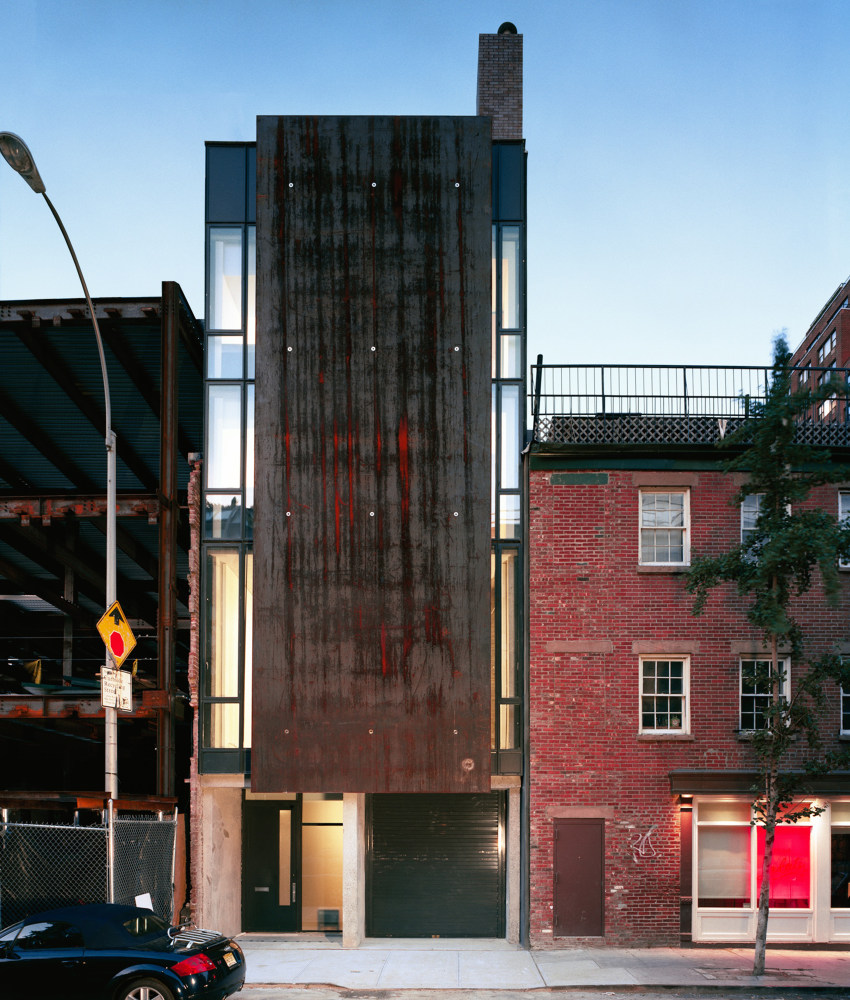
Here’s a way around the city’s increasingly impossible real-estate market: build your own house. Granted, it’s the road less travelled—if indeed it’s travelled at all. (In the last thirteen years, according to Buildings Department records, only one new single-family house has been built in the West Village.) Last month, however, construction began on a town house at 829 Greenwich Street—a small patch of land that sits on the dividing line between the West Village and the meatpacking district.
The owners of the property are a young English couple with two small children who moved to New York in the spring of 2001. “We looked at brownstones in the West Village,” the wife said recently. “But we didn’t have the budget to buy a four-million-dollar house.” Two years ago, on the evening of her birthday, she and her husband walked out of Pastis and passed a decrepit, partially collapsed Federal-style town house. The windows were mortared up, and the brick façade, which was slathered with stucco, bulged out as if at any minute the whole house would fall in on itself. A sign said that it was for sale. “I just knew,” she recalled. “I looked at my husband and said, ‘This is it.’”
Shortly after signing the contract, they hired the architect Matthew Baird. Baird is a well-spoken man in his late thirties who bears a faint resemblance to Liam Neeson. It took him a week to come up with a design. The interior, he said, borrows from the Federal-style homes of the West Village, but the over-all effect of the house is ultra-modern, taking its cues, Baird said, “from minimalist art and the tough industrial feel of the meatpacking district.” The façade is a massive plate of recycled steel, three stories high, that will be bolted onto the front of the building. The back wall is made almost entirely of glass. There is virtually no ornament anywhere. It could hardly be less characteristic of the Village.
Though his clients were thrilled, many of the neighbors were not; and so they showed up at community board meetings to complain, as unthrilled neighbors will. “It looks like a cineplex,” Bill Cornwell, the treasurer of the Horatio Street Association, said.
“They wanted it to look like Colonial Williamsburg,” Baird said.
One person’s avant-garde, though, is another’s antique. One of the meatpacking district’s better-known businessmen, Florent Morellet, the owner of Florent, the sleek Gansevoort Street diner that is popular with both cross-dressers and corporate financiers, began to speak out in support of the house. Alarmed by the brushfire development around the Gansevoort Market, Morellet helped push to have the area designated a historic district (a proposal that just passed), yet he also praised the plans for 829 Greenwich Street, calling the use of steel building materials “authentic” to the history of the neighborhood. Last spring, when Baird and his team presented their design to the Landmarks Commission, the board voted unanimously in favor of it, and last February the old place was finally demolished.
To celebrate the groundbreaking, Baird threw a party at Florent just before the new year. Baird and the woman who owns the house (her husband was out of town) strolled amiably among the guests. Hanging in the restaurant’s entryway was a large computerized rendering of the house. People commented on the huge steel façade, which, if it is trucked into the city, will necessitate a temporary shutdown of the George Washington Bridge.
“It weighs seventeen tons,” a man said.
“Is it really cheaper to build than to buy?” someone else wanted to know.
The owner said, “In a market where nice brownstones are selling for between four and six million, I think it’s fair to say this is being built for considerably less.”
Baird nodded. “I visited a brownstone recently that was in terrible need of work. It’s the same size as the Greenwich Street property, and the asking price is only slightly less than what the total cost of our project will be. Now, that house needs a tremendous amount of work, and when it’s done it won’t have state-of-the-art structure, insulated windows, built-in data, telephones—all the bells and whistles that we have in modern houses.”
When the Greenwich Street house is done (the estimated date is the spring of 2005), it will have five bathrooms, two fireplaces, a library, a wine cellar, a vertical garden with climbing hydrangeas, a hot tub on the roof, and a drive-in garage. “It was a bit of an urban no-no, in my opinion, to add the garage,” Baird says. “I learned in school that the automobile was the death of the city. At the same time, I can relate to the convenience of it, the luxury of being able to pile your kids in the car and just go. At least it’s not a big garage. You can’t fit an S.U.V. inside it.”
Published in the print edition of the January 19, 2004, issue.